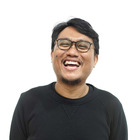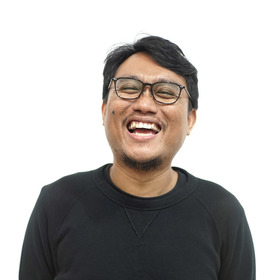Create and Learn Together
Can we learn something through art, apart from aesthetics?
That question always appears in my mind whenever someone talks about the benefits of learning the arts. I have been nurtured by an artist group that taught me to learn from anyone-anywhere-anytime, to gain knowledge through chaos-like structure, and to create open-ended projects that allow others to join. Art, learning, and life should always be hand in hand. It differed from what I was taught in art school: everything should be based on individual credits and object productions.
A visit to Machida City Printmaking Arts Museum, which led me to write this article, sparked that question again. Haruka Machimura, the curator, explained how woodcut printmaking plays a role in Japanese education history, which employs the vital aspect of learning art, not only for making artwork but also to learn critical thinking, communication, and solidarity.
I started working at YCAM in 2019, and not long after, I learned that apart from the image of cutting-edge media art projects, YCAM also emphasises the aspect of community and education in their system, which is consolidated in the sentence “Create Together, Learning Together”. The development of the education team alongside their program is proof of commitment to those aspects. Recently, some of the programs have been intentionally developed with more involvement from the public rather than one-way delivery. Some notable examples are Sankaku Talk–a visitor-based appreciation program, Yamaguchi Future Sports Stadium–a co-developed sports event with the public, “Neither of us grasps the arts”, and Guruguru Radio.
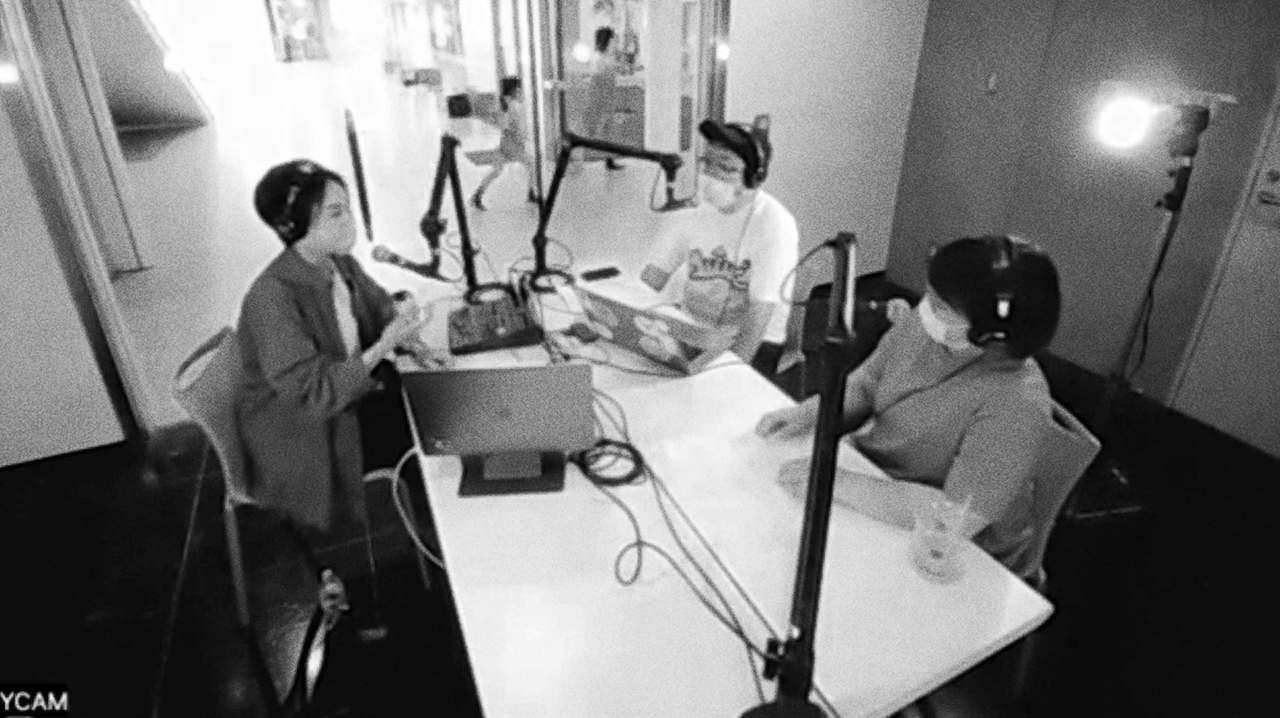
GURUGURU RADIO, courtesy of YCAM
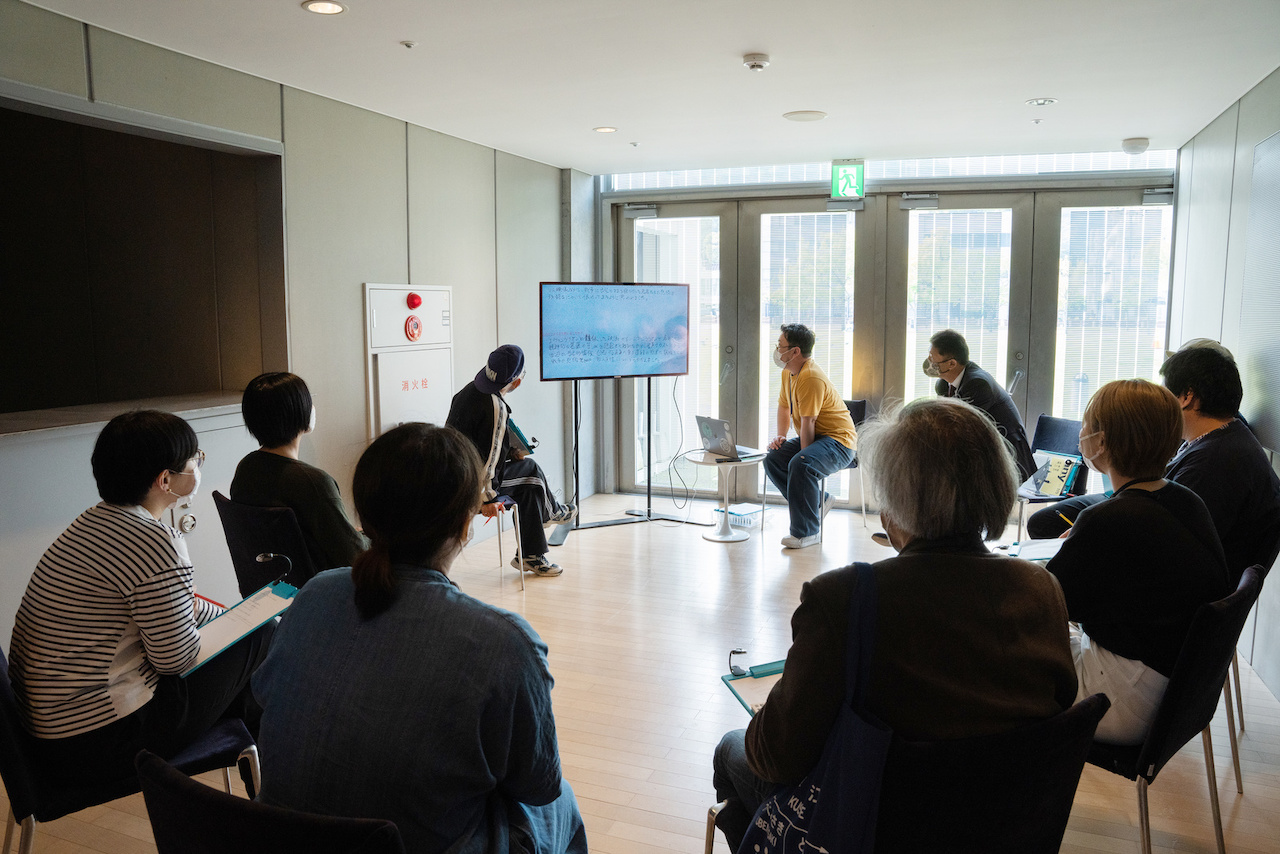
Triangle Talk, Photo: Yasuhiro Tani, Courtesy: YCAM
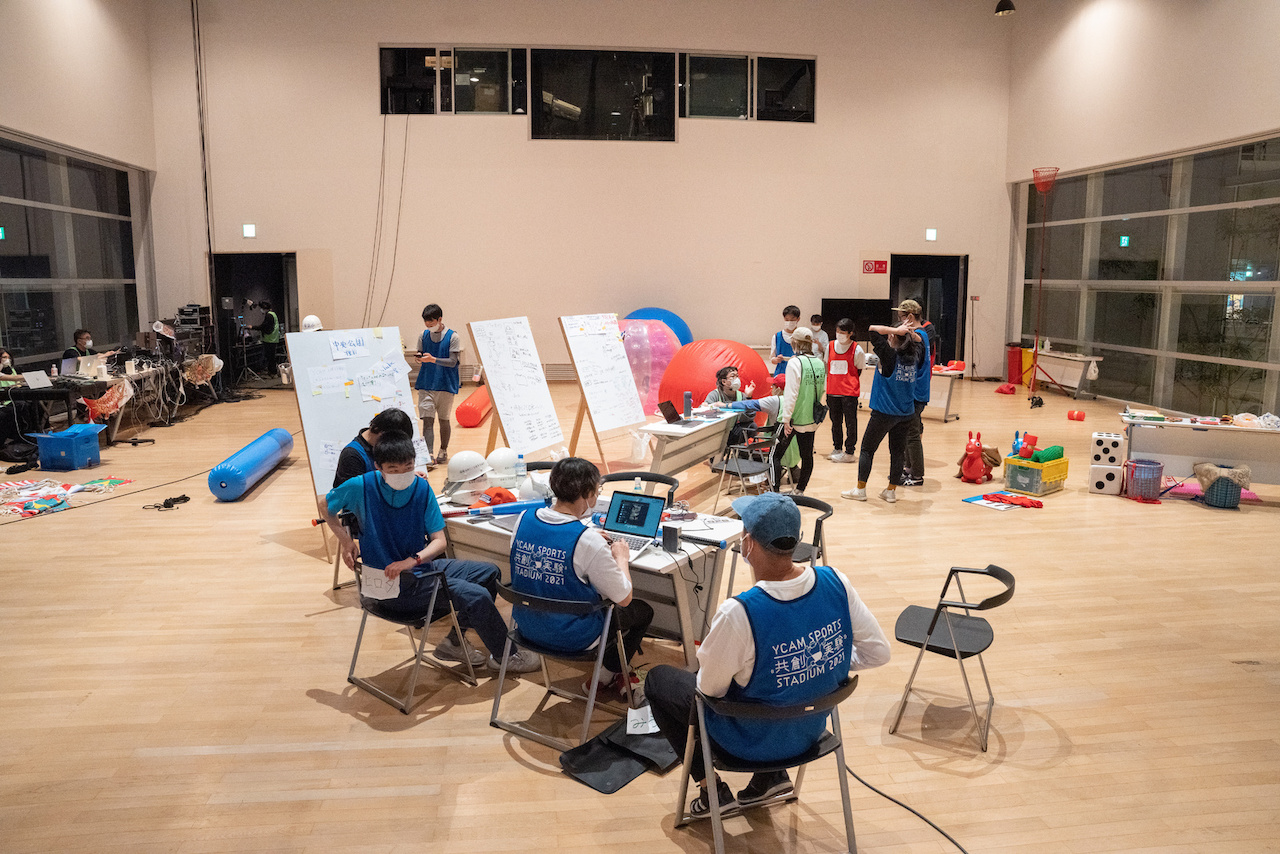
YCAM Sports Co-creation Experimental Stadium 2021, Photo: Yasuhiro Tani, Courtesy: YCAM
Drawing from that spirit, since last year, I set a three-year project under the frame of "Alternative Education". The basic idea was to explore the possibility of using an art centre as a place to learn and question the use of art within society.
For the first year, we inaugurated the project by presenting Kurikulab Moving Class, an exhibition by Jakarta-based artist collective, Serrum, from October 2021 until February 2022. Serrum was founded by a group of artist / art teachers who decided to pursue their ideology about art and education, using art as a tool of learning and sharing.
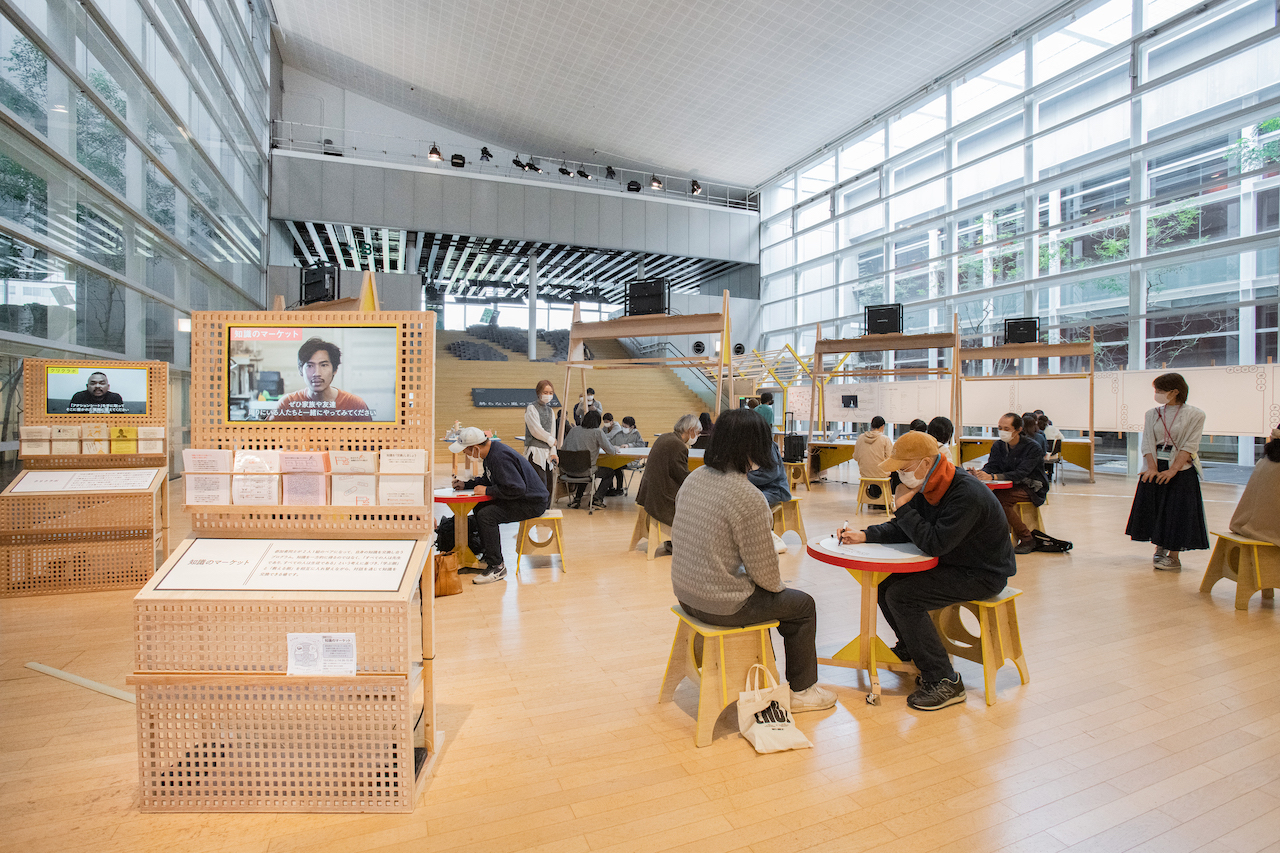
Pasar Ilmu / Knowledge Market #1 30 October 2021, Photo: Yasuhiro Tani, Courtesy: YCAM
We held the exhibition in an open space, which focuses on inviting the visitor to take an active role: to play, learn, and exchange knowledge with others. We set the atmosphere in a friendly tone by using a kind of DIY furniture set, allowing "imperfect" situations to be exercised by the visitors. Apart from the installation, there is a set of a DIY book called PLAYBOOK──40 pages of tasks, information, and games to challenge our perception of education and share the idea that Serrum has been present in the exhibition.
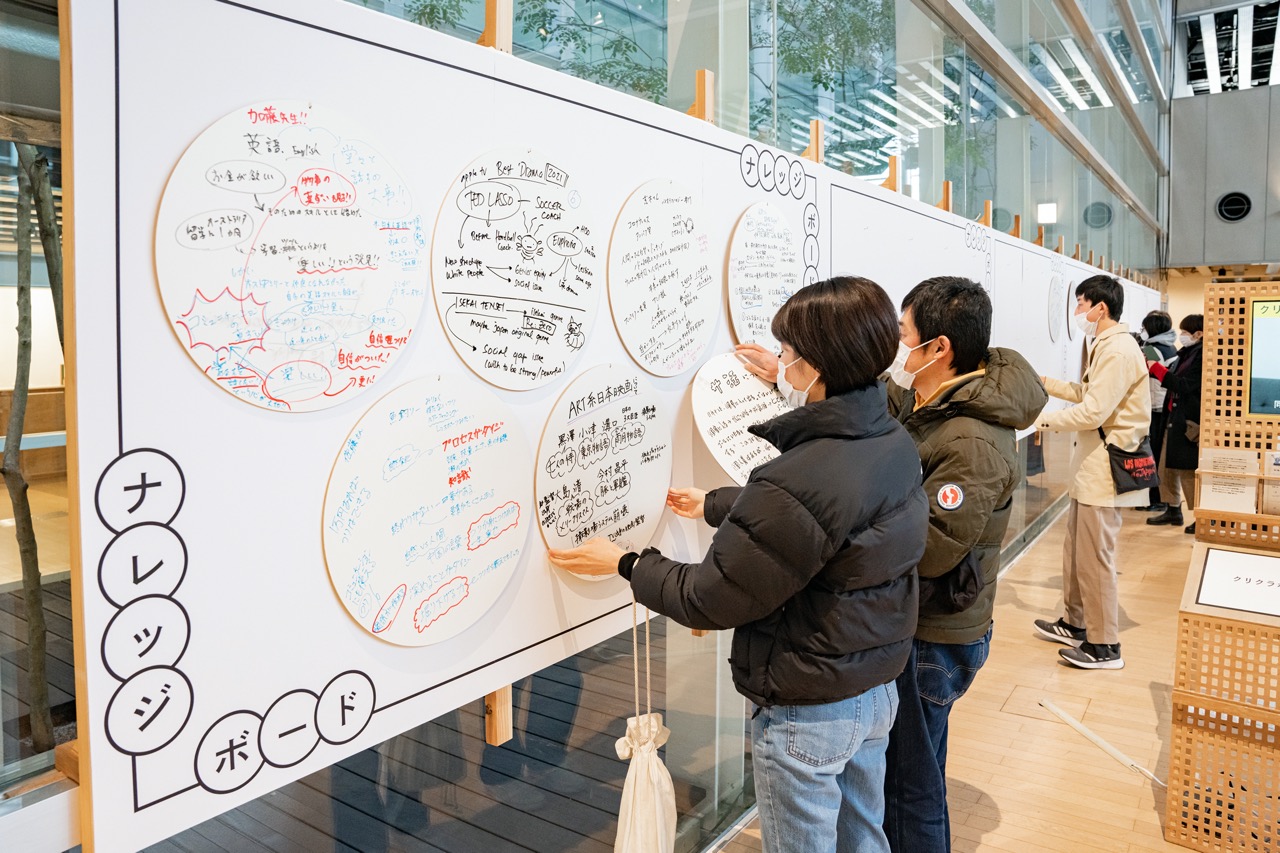
Pasar Ilmu/Knowledge Market #2 15 January 2022, Photo: Yasuhiro Tani, Courtesy: YCAM
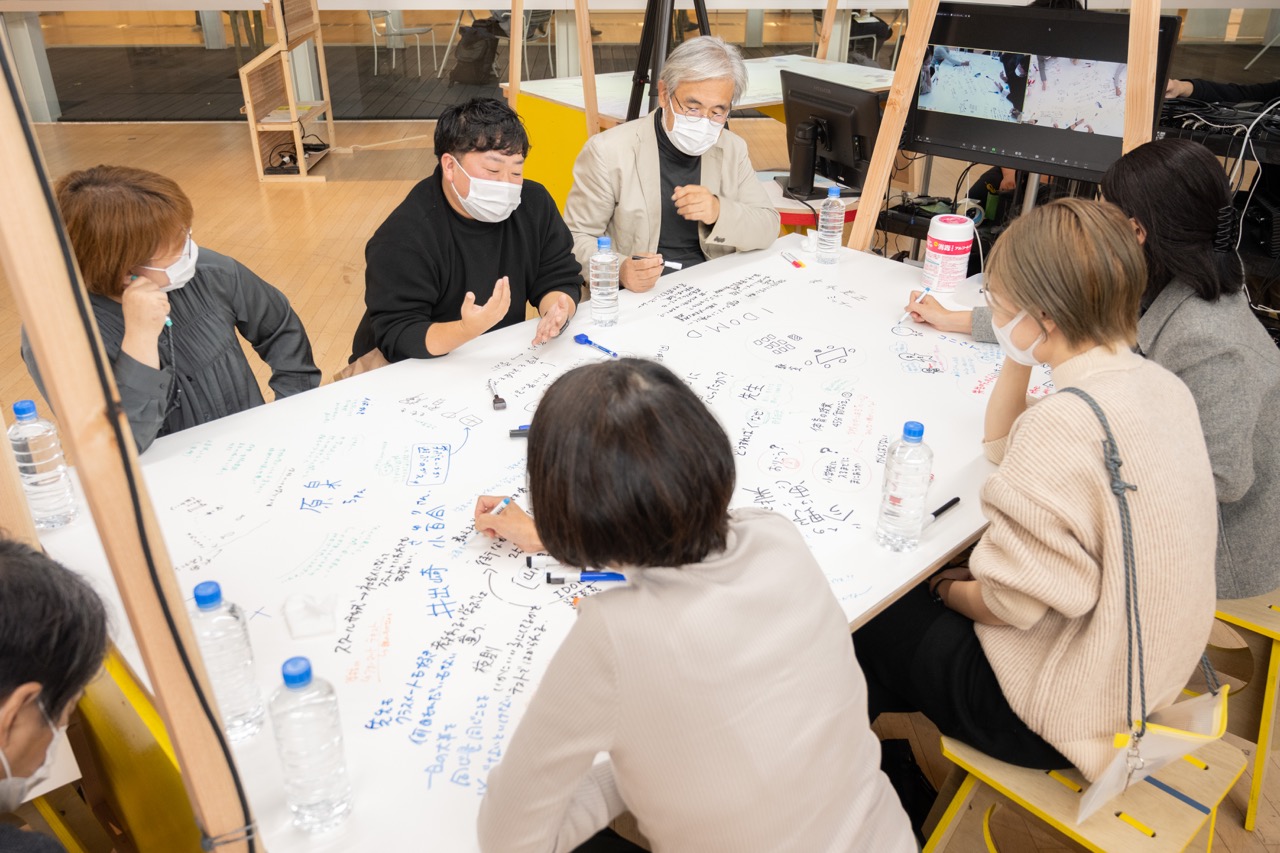
KURIKULAB (Discussion) “Japan Education System”, 14 November 2021, Photo: Kazuma Yoshiga, Courtesy: YCAM
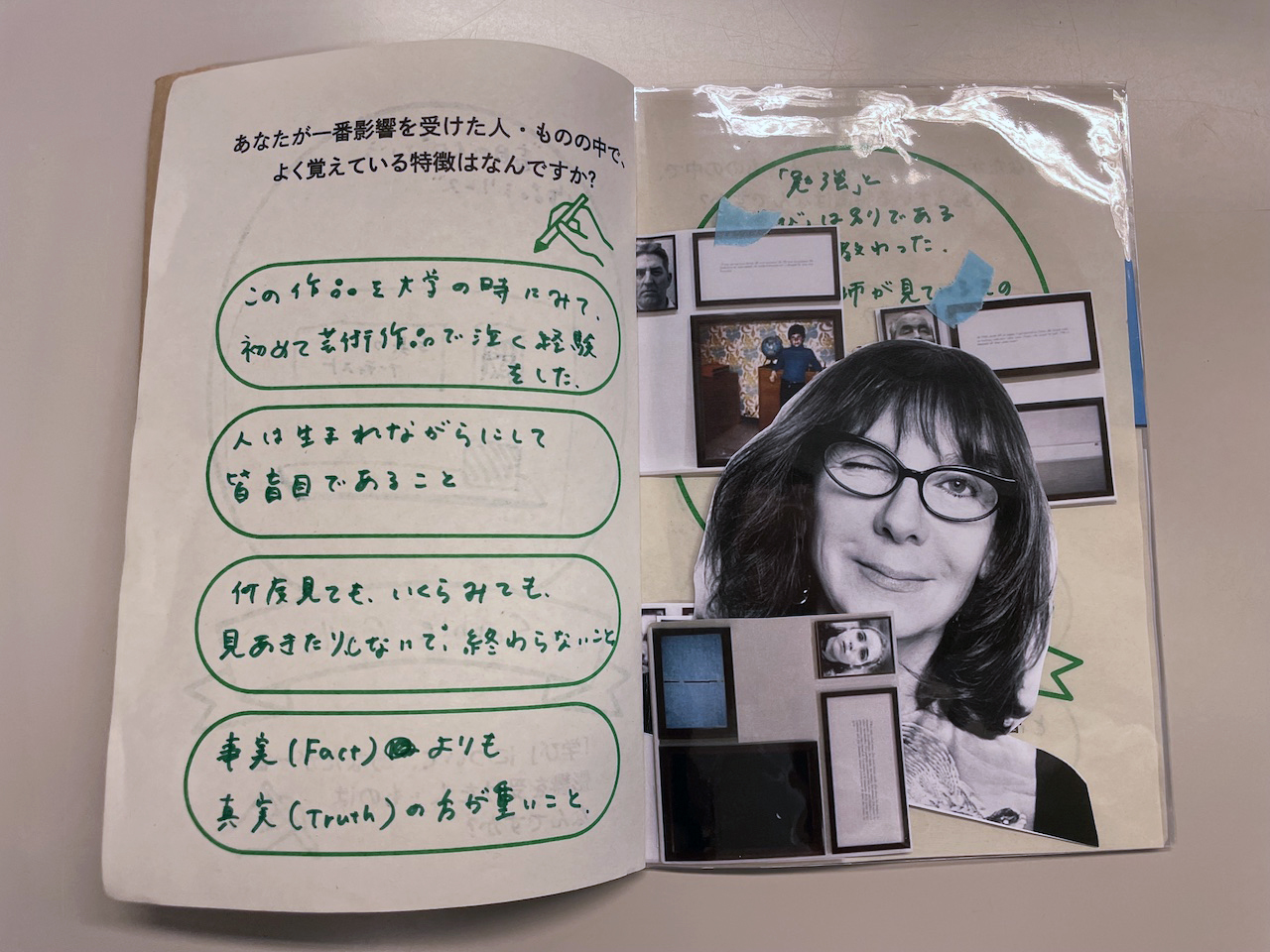
An snapshot from PLAYBOOK. Photo: Daichi Yamaoka, Courtesy: YCAM
There is also an online conversations program, YCAM OpenLab 2021, which invites speakers from abroad and domestic to discuss using art as a learning tool and other essential elements that art carries, such as empathy, critical thinking, engagement, ethics, and many others. In one of the episodes, Naoko Horiuchi from AIT through the “Dear Me” project and Akigo Tsuguchi about The Tomonotsu Museum shared their effort to develop and improve well-beingness by using art as the catalyst. Their activities also show the possibility of breaking away from the institutional trap, where the public usually takes a passive role in the creation process. Another interesting note came from John Byrne (Liverpool) and Alistair Hudson (Manchester), who shared the idea of Arte Util. This project draws on artistic thinking to imagine, create and implement tactics that change how we act in society.
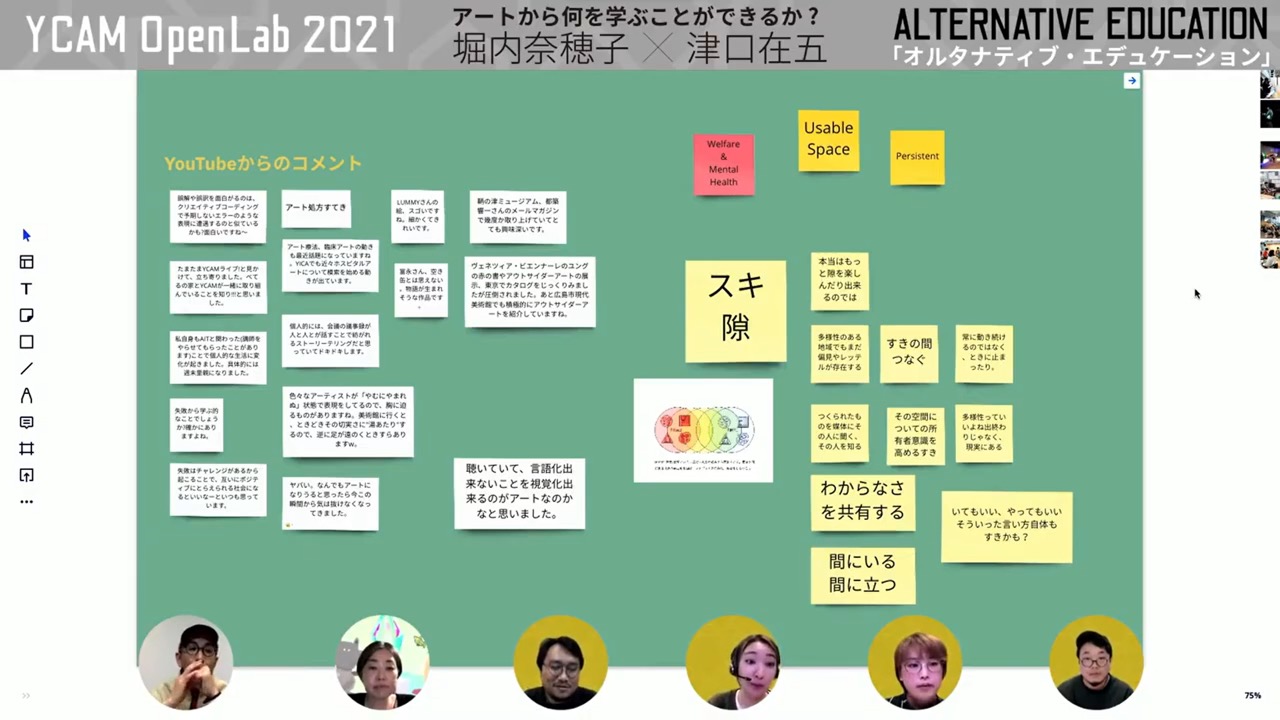
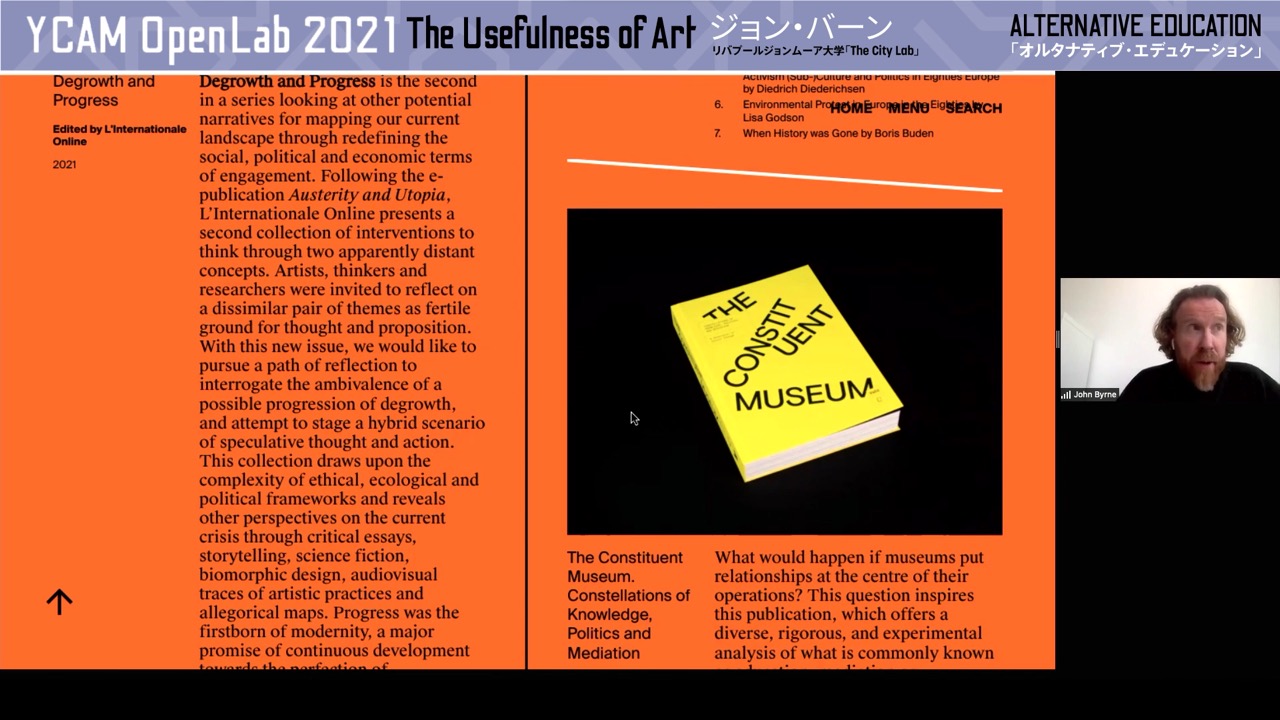
From those experiences, the project will continue again this year. We endeavoured to collaborate with John Byrne and the Arte Util project to develop a particular structure that could enable the public to access YCAM resources. The aim will then be to pursue full participation from the public in the creation process and thus allow the art centre as a classroom where everyone can create together and learn together.
At some point, it might be good to look back at the Social Sculpture view proposed by Joseph Beuys: that everything is art; we can approach all aspects of life creatively, and as a result, everyone has the potential to be an artist. We know that art has vast potential to flourish the human condition through creativity, conversation, and compassion. And this brings me back to the first time I joined ruangrupa, where I encountered a massive script on the wall, “If good art is for all, then surely it should start on the street we walk.”
July 28,2022

